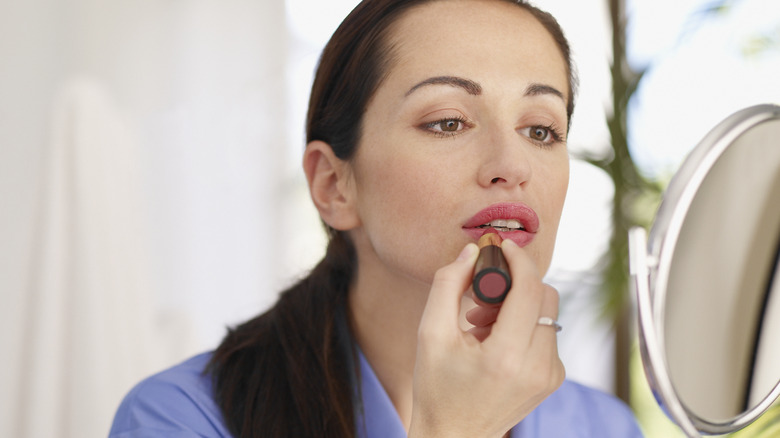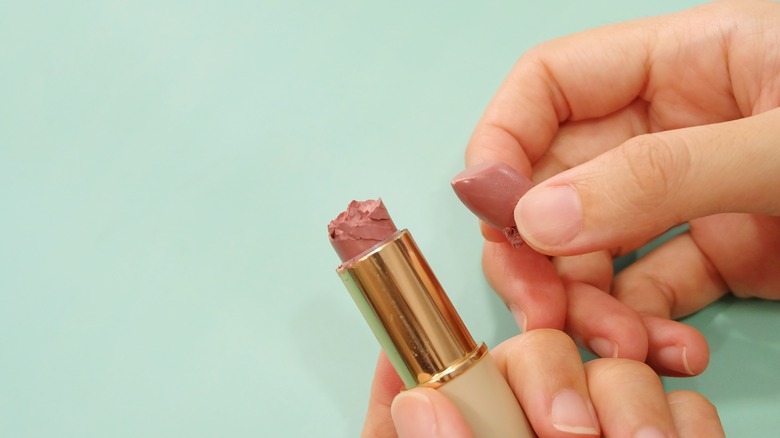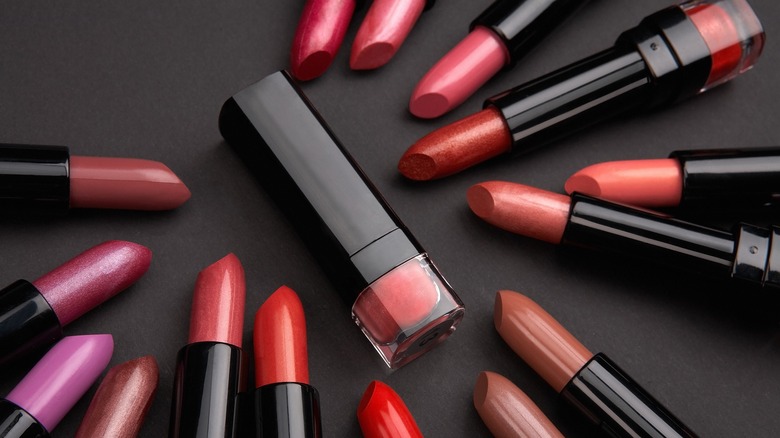The Real Sticky Situation Caused By Using Expired Lipstick
You would never drink a carton of milk beyond its expiration date, nor would you pop a pill after it had crossed its expiration threshold. So, why should you use makeup products after they have expired? Whether you are a makeup hoarder or someone who pulls out the same five products for use on rare occasions, it is important to note that all makeup items have a recommended shelf life and should not be used beyond that date.
People find it easier to identify when certain products like foundations, eyeliners, and mascaras are past their optimal productivity. However, it can be tricky to determine the expiration dates of lipsticks for a variety of reasons. As most people own more than one or two lipsticks, it's easy to overlook the expiration dates of those that aren't used frequently. Further, the outward appearance of lipstick isn't affected as quickly as other makeup products. It can also be tempting to hold on to certain lip shades one is partial to, as they might be difficult to replace with an exact dupe.
Don't be fooled, though. Using lipstick beyond its recommended shelf life can be just as harmful as using other expired makeup products. Here's why.
How do you know when your lipstick has expired?
Unlike food products and medicines whose "best before" period begins the moment they are manufactured, the expiration date of makeup products usually begins from the time they are first opened. Unopened products also expire, but at a slower pace than items that have been opened and used.
In the case of lipsticks, the general rule of thumb is to get rid of them one or two years after first using them (via The Ohio State University). For moisture-rich items like lip glosses, the time period is lower than this. One should get rid of them after 12 to 18 months.
If you are looking for visible signs to see if the product is beyond its expiry date, first examine its label to check if the expiration date has been mentioned. In case you have lost track of when you first started using the lipstick, look out for a change in smell or texture. Old lipsticks often develop a funky smell similar to that of crayons. There may also be a visible sign of mold developing on the bullet of the lipstick, and in some cases, it may become excessively oily or ooze moisture due to a breakdown of its internal ingredients. The easiest way to check if the lipstick is within its usage period is to apply it on your lips. If it glides easily on the lips, it still has some life left in it, but if it's dry and crumbly, you should replace it.
What happens when you use expired lipstick?
The director of makeup artistry at Glamsquad, Kelli Bartlett, tells Byrdie that the skin on the lips is thinner than the skin on other parts of the body, which is why it's more "susceptible to bacteria. Lipstick is full of natural, hydrating ingredients, which, when exposed to air, can dry out. When sources of bacteria or viruses are introduced into lip gloss—from a skin infection or cold sore, for example—the gloss wand can transfer bacteria into the ampule, contaminating the entire product."
She also highlights that lip liners which come with the promise of longer wear are also prone to drying out and become less effective when they are exposed to air. The use of expired lip products increases the chances of your skin reacting to the expired ingredients in the product, which can lead to itching, peeling, redness, or irritation around the mouth. Since the bacteria spreads fast, if it comes in contact with an open container or a brush, it can also cause breakouts or other infections on the rest of the face.
We can prevent the adverse effects of using expired makeup simply by exercising caution. So, the next time you pull your favorite red lippie out from the bottom of your makeup drawer after months, think twice before you put it on.


